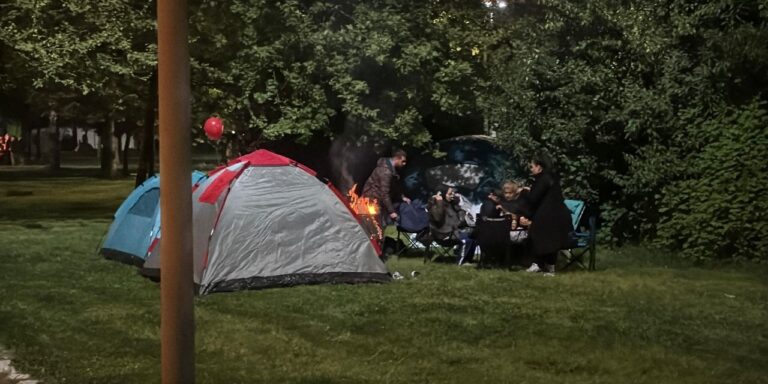Thousands of İstanbul residents spent the night outdoors in parks, mosques and public shelters after a powerful 6.2-magnitude earthquake struck off the coast of Turkey’s largest city on Wednesday, fearing that the tremor might have been a precursor to a much larger quake.
Though no fatalities or major structural collapses have been reported, the quake sent shockwaves of fear across İstanbul, a city of more than 16 million located near the active North Anatolian Fault. Authorities reported at least 51 aftershocks, including one measuring 5.9 in magnitude, renewing fears of a larger seismic event.
Municipalities across the city kept public buildings open overnight, offering shelter, food and hot drinks to people too afraid to return home. In districts like Kağıthane and Zeytinburnu, residents pitched tents in parks. Hundreds of people spent the night at Fatih Mosque, sleeping inside or in the courtyard, while others gathered in gymnasiums and indoor sports facilities provided by local governments.
Adding to the public’s anxiety, seismologist Marco Bohnhoff from the German Research Centre for Geosciences (GFZ) told DW Turkish that the recent quake might be increasing stress along the fault line closer to İstanbul.
Bohnhoff outlined two possible scenarios, the first being that the 6.2-magnitude quake was the main event, with aftershocks that would gradually subside over time.
“The second possibility is the occurrence of a much stronger earthquake, with a magnitude that could reach up to 7.4,” he added.
Bohnhoff emphasized that while it’s currently impossible to predict which scenario will unfold, “stress has shifted eastward, toward İstanbul, making a quake closer to the city more likely in the near term.”
Meanwhile, Naci Görür, an earthquake expert with Turkey’s Academy of Sciences, addressed widespread fears on social media. Responding to questions about whether it was safe to re-enter homes, Görür advised caution.
“If there are visible cracks or damage to beams or columns, or if official authorities have declared a building unsafe or sealed it, do not enter,” he posted on X. Görür said it is only safe to return if the building is structurally sound and shows no visible damage.
Arkadaşlar, evimize girelim mi. Girmeyelim mi diye soruyorlar. Asistanıma da çok soru geliyormuş. Cevap şudur: Resmi organların bu binaya girmeyin dediği yerlere kesinlikle girmeyin. Resmi organlarca mühürlenmiş yerlere girmeyin. Evinizde çatlak yarık vs varsa girmeyin.…
— Prof. Dr. Naci Görür (@nacigorur) April 23, 2025
The expert also warned in a previous post that the recent seismic activity along the Kumburgaz fault in the Marmara Sea is likely increasing strain rather than releasing it.
“These are not the large earthquake we’re expecting in Marmara. But they are increasing the stress on this fault, pushing it closer to rupture. The real quake here will be larger — over magnitude 7,” Görür added.
He further stated that an earthquake is “too important to only talk about after it happens.”
Görür said that earthquake preparedness must begin well in advance, with cooperation between the government, municipalities and the public. He noted that urban renewal is not the same as building an earthquake-resistant city and that the public must now take action by demanding oversight and accountability.
Wednesday’s quake and its aftershocks have renewed public concern over the preparedness of both government institutions and private infrastructure in the event of a larger catastrophe.
İstanbul’s vulnerability to earthquakes has long been a source of concern. The February 2023 twin quakes in southeastern Turkey, which killed more than 50,000 people and exposed major gaps in building safety and emergency preparedness, continue to cast a shadow.

